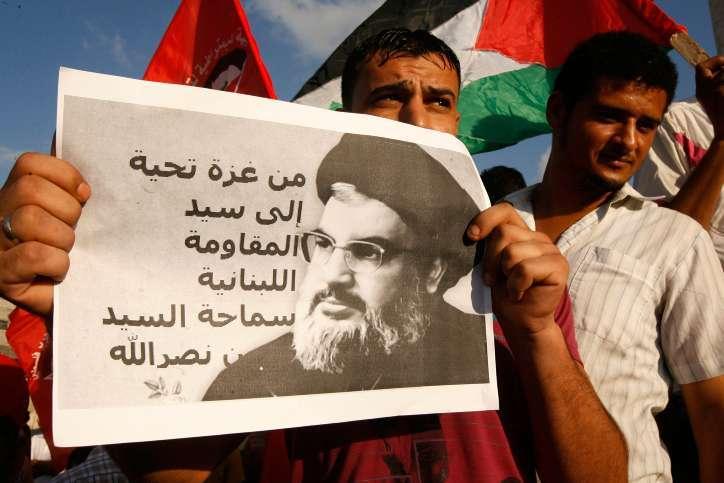
Hezbollah wants a united front led by Iranian proxies
Hezbollah leader Hassan Nasrallah’s latest speech replied to IDF warnings not to commit one mistake too many that could lead to a total war on several fronts. Nasrallah declared that Israel was the one that should be cautious as it faces Iranian proxies in Lebanon, Syria, Gaza, Judea and Samaria, and “occupied Palestine.”
As if to challenge Israel and illustrate what he meant, Hezbollah conducted two military exhibitions to which the foreign and local press were invited on the 23rd anniversary of Israel’s withdrawal from the security zone in south Lebanon.
Hezbollah’s drill objective was to destroy a defensive wall erected by Israel on the border with Lebanon. Breaching the defensive barrier would involve creating several breaches in the wall to enable Hezbollah elite units to storm Israeli villages and “conquer” parts of the Galilee. Hezbollah’s spokesman emphasized that those drills were offensive tactics against Israel and not defensive.
The idea of Hezbollah invading the north of Israel is not new. The operational plan to conquer the Galilee was first raised on February 16, 2011, when Nasrallah told his fighters to be prepared to conquer the Galilee should Israel launch a war against Hezbollah.
The fighting force was composed at the time of five brigades, each with a pre-designated combat zone in northern Israel:
Brigade 1 will take over the town of Nahariya or parts of it.
Brigade 2 will take over the town of Shlomi.
Brigade 3 was ordered to reach the town of Carmiel and conquer areas south of it.
Brigade 4 would take over the communities of Malkiya, Ramot Naftali and Yiftach.
Brigade 5 will serve as a strategic reserve force for special missions.
However, this plan, which included the active participation of Syria, was postponed because of the Syrian civil war and the fact that Hezbollah had to send its troops to fight in Syria at the orders of Iran to save Assad’s Alawite regime from collapse. Since the massive return of Hezbollah’s units to Lebanon, there’s little to no doubt that this operational plan has been modified to suit the present conditions in the field and the changes in the Hezbollah fighting force.
With the return of Syria to the Arab fold and the seeming end of the civil war, Hezbollah may believe the time has come to revive this plan and put it back on the movement’s top priority agenda. In his speech, Nasrallah said that the struggle with Israel has not ended, since parts of the “Lebanese homeland were still under Israeli occupation.”
Nasrallah was referring to three issues:
The tunnel that links Lebanon and Israel on the seashore border crossing of Rosh Hanikra (Nakoura for the Lebanese).
The Sheba’a farms adjacent to the Golan Heights.
“Seven villages” in northern Israel abandoned by their Shiite residents during the 1948 Independence War.
The territorial issue is high on Hezbollah’s agenda with Israel. However, to concretize Nasrallah’s vision, Hezbollah understands that it could be facilitated only if and when Israel faces a united front led by Iranian proxies extending from Lebanon, Syria, Iraq, Judea and Samaria, Gaza and far to the south in Yemen.
Against all logic, since the Shiite community suffered during the years of the “Palestinian occupation” of southern Lebanon in the 1970s, Hezbollah has endorsed the Palestinian cause, has become its champion and chief promoter, and is closely coordinating its efforts with the two Palestinian terrorist organizations linked to Iran: Hamas and Palestinian Islamic Jihad (PIJ).
Moreover, Hezbollah assesses that such a plan could reinforce Hezbollah in its struggle against Israel, facilitated by the Israeli failure to establish an anti-Iranian alliance with the Arab countries and the waning influence of the United States in the Middle East.
Source » israeltoday





